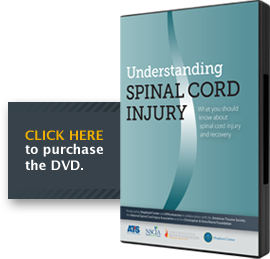Spinal Cord Injury: Basic Facts
Spinal cord injury occurs when there is any damage to the spinal cord that blocks communication between the brain and the body. After a spinal cord injury, a person’s sensory, motor and reflex messages are affected and may not be able to get past the damage in the spinal cord. In general, the higher on the spinal cord the injury occurs, the more dysfunction the person will experience. Injuries are referred to as complete or incomplete, based on whether any movement and sensation occurs at or below the level of injury.
The most important – and sometimes frustrating – thing to know is that each person’s recovery from spinal cord injury is different.
CAUSES
Traumatic injuries
- Motor vehicle accidents
- Football
- Falls
- Gymnastics
- Violence
- Diving into shallow water
Spinal cord injuries affect more men than women. The majority of people who sustain a spinal cord injury are young adults between the ages of 16 and 30 because of riskier behaviors.
Non-traumatic injuries/illnesses
- Cancer Osteoporosis
- Multiple sclerosis
- Inflammation of the spinal cord
- Arthritis
EFFECTS
The effects of spinal cord injury may include the following:
- Loss of movement
- Loss of sensation
- Loss of bowel and/or bladder control
- Exaggerated reflex actions or spasms
- Changes in sexual function, sexual sensitivity and fertility
- Pain or intense stinging sensation
Produced by Shepherd Center and KPKinteractive in collaboration with the American Trauma Society, the National Spinal Cord Injury Association and the Christopher & Dana Reeve Foundation.









